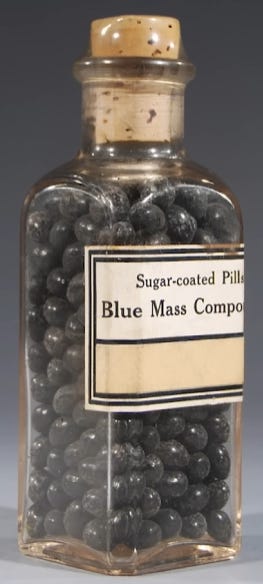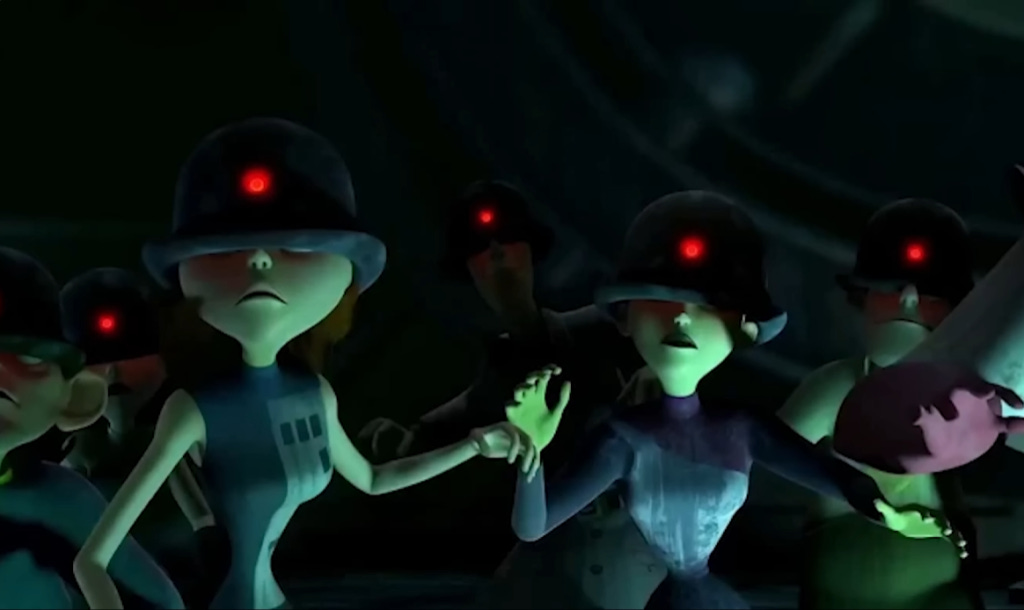The Deeper Literary Symbolism Behind Top Hats and Bowler Hats
Discover the surprising, twisted history of top hats and how it's leveraged in literature and the arts.
In writing, they say an apple is never just an apple. Even if a writer throws an apple into a story and insists there was no meaning behind it, the apple itself still carries a history of meaning that exists in the collective unconsciousness, whether the author likes it or not.
So writers often tap into deeper meaning unintentionally; The best writers tap into it consciously.
What do you think of when you see a character wearing a top hat or bowler hat? Perhaps a dapper gentleman? A wealthy person in formal wear with a monocle and cane? Or is there something more?
These hats were largely made from black or gray furs and silk, and at one point it seemed just about every man in the Western world wore them.
They were either invented in France or Turkey in the 1600s, and had gained popularity in England by 1830. They were originally made from a combination of camel hair and camel piss (urine sped up the felting process and helped stabilize the wool). Frenchmen quickly discovered that using their own urine worked just as well.
One particular Frenchman's urine worked better than the rest, creating felt hats of "a finer quality". He revealed he'd been undergoing treatment for syphilis, so his urine contained high concentrations of mercury.
Thus, mercuric nitrate saw widespread use across the pelt-curing industry, despite the scientists and alchemists of the time knowing well the health risks of mercury poisoning.
Over time, the chemicals not only seeped into wearer's scalps, but produced hazardous inhalable fumes.
In the U.S., these hats began to replace bicorne and tricorne hats by the 1780s, and were soon considered fashionable urban wear by the middle and upper class.
The "roaring twenties" brought about the popularity of less formal versions of the hats such as bowlers, homburgs, boaters, porkpies, and fedoras. These styles didn't fall out of favor until around the time of John F. Kennedy's presidency (1960s).
But up until then, they were immensely popular on a level that's hard to imagine even today. If you didn't have such a hat, you were considered a nobody.
The idea was to look exactly like everyone else. Conform, make this uniform part of your identity or you wouldn't be special, wouldn't be considered part of the club.
Today's "top hat" is undoubtedly the fedora, or perhaps those hideous unnatural hair dyes, if not just outright being a liberal.
By now, you've probably remembered what else these hats represent:
"Mad as a hatter," they say.
Lewis Carroll wrote and published Alice's Adventures in Wonderland back in 1865 (in the very same building C.S. Lewis would later pen his Narnia adventures), and the character "the Mad Hatter" exhibits all the hallmarks of mercury poisoning.
Slow, but prolonged exposure causes erethism, or "mad hatter disease", a neurological disorder that affects the whole central nervous system and causes behavioral changes, psychosis, irritability, depression, apathy, excessive shyness, delirium, personality changes, and memory loss.
Not to mention the physical ailments which include arrhythmia, decreased strength, headaches, tremors, and potentially early death.
His personal life aside, Carroll's timely warning of the dangers of these hats did little to stop their popularity surge in the years following his book's release.
Men wore these hat everywhere outside the home almost all the time. As they got older, many would start exhibiting what were called the "hatter shakes". They'd suffer confused speech, distorted vision, emotional instability, and even hallucinations.
Dentists often got mad hatter's disease through handling dental amalgams. Silver amalgam fillings used to be composed of 50% mercury, and mercury is still used in the metal extraction process. There are many old recorded cases of folks with silver fillings getting mad hatter's disease as well.
Perplexingly, the widespread use of these hats was not a spontaneous phenomenon. It was manufactured and made popular in the world of fashion on purpose through catalogues, magazines, and other forms of popular entertainment. But to what end?
You may be asking yourself how this could have possibly been done on purpose since many of the elites also wore such hats.

It turns out that expensive top-of-the-line hats were made from exotic or beaver furs and silk... which usually did not get cured with mercury. It was the cheaper hats made of rabbit fur that largely got the mercurial treatment.
Which brings us to the curious case of Danbury, Connecticut, a place which became known as the "hat city of the world". By 1880, fifty-six different Danbury factories were producing five million hats per year. (Their baseball team was even dubbed the "Danbury Hatters" and hockey team, the "Danbury Hat Tricks", and so on, to this day.)
They cranked out these hats to the public despite Civil War doctors having already known and documented every symptom of mercury poisoning. One of Abraham Lincoln's army sergeants, Boston Corbett (the man who hunted down and killed John Wilkes Booth), was a known sufferer of mad hatter's disease. He'd been involved in the milling industry from a young age and went so mad, he even went as far as to castrate himself with a pair of scissors. Mind, this madness and castration happened before he enlisted in the Civil War and became a hero, but followed up his career with many other crazy exploits, including attacking fellow officers which got him court-marshalled twice and committed to an insane asylum.
Lewis Carroll's hatter was said to have been patterned after a well-known and eccentric furniture salesman, a mad hatter's disease sufferer named Theophilus Carter, a local celebrity whom Lewis would've likely been well aware of.
And doctors administered a popular mercury pill called "Blue Mass" to the public regularly for problems as common as constipation and killing parasites.
The recommended daily dose was two pills, which contains 100 times the recommended daily limit for mercury exposure today. Mercury was also included in many makeup products, and there were efforts to make female mercury-laced headwear just as popular.
So it had been well-known that these hats (and mercury in general) caused insanity, yet the use of mercury in medicine, silver fillings, and the manufacturing process for these hats didn't halt until 1941.
Danbury became so synonymous with top hats that the hatter shakes were often referred to as the "Danbury shakes".
Danbury factory employees got mercury poisoning even faster than the general populace, to the point where they exhibited a near-perpetual drunkenness. The factory owners knew about this problem and were known to exploit the situation, taking advantage of their unaware workers.
The city's seal features a bowler hat, a phoenix being reborn from the flames of the crown chakra, and the Latin word "Restituimus", which means "to restore".
The seal's deep occult symbolism seems to suggest the founders of Danbury knew exactly what they were doing. Perhaps that's what it comes down to - A population wearing these hats, much like the Danbury employees, is far more easy to control. Get the general populace wearing these hats and elites can do as they wilt.
It dims awareness and crushes resolve. Perhaps, symbolically, that's part of why top hats are still used as a source of misdirection by magicians to this day.
Which brings us to the third and final narrative use for these hats: Mind control.
I want to be perfectly clear: It is absolutely a conspiracy theory that hats were used for mind control purposes. There's no proof that mercurial products were shilled to the public for over a century after its ill health effects were known on purpose, but curiously these hats keep showing up in stories alongside themes of mind control.
And it sure gives new meaning to this famous painting, doesn't it?
It's called "Le fils de l'homme", or "The Son of Man", painted in 1964 by surrealist René Magritte. It's said that the man actually has no face and that the apple represents a "loss of identity". Of course, apples represent temptation and men being sons of Adam.
Hm. Lots to think about, there.
Of course, there's also the fact that bowler hats were designed by the Bowler brothers with hand-to-hand combat and horse riding in mind. So there are certainly fun ways to utilize these hats in literature as well.
Victorian era butlers were quite skilled with the cane, and there are clever combat moves that can be employed using a bowler hat or derby. Dapper! I must say, it's one of the most elegant and stylish ways to dispatch an enemy that has ever existed on Earth.
If you can figure out ways to link these styles of hats to wealth, mental illness, and populace mind control, your stories should come further to life, tapping into the rich font of deeper meaning that exists on the stage of world history.


















